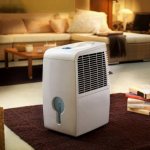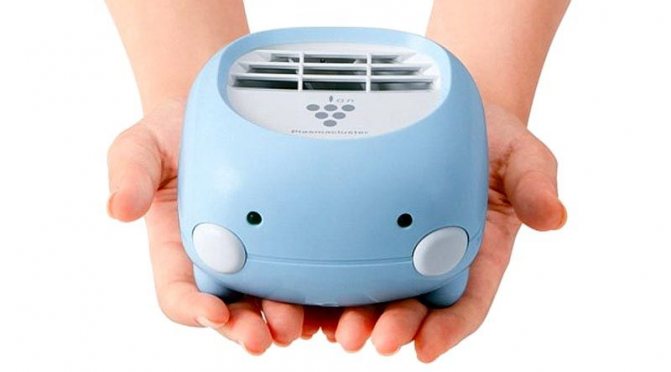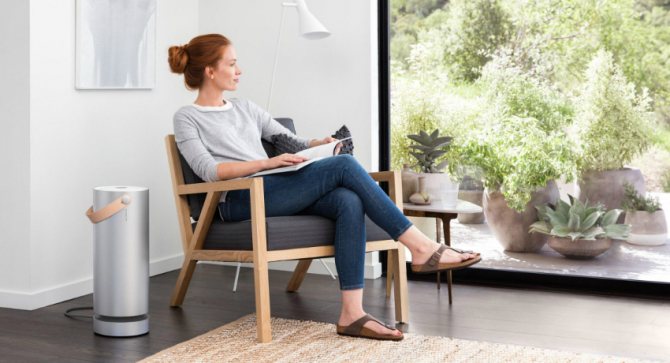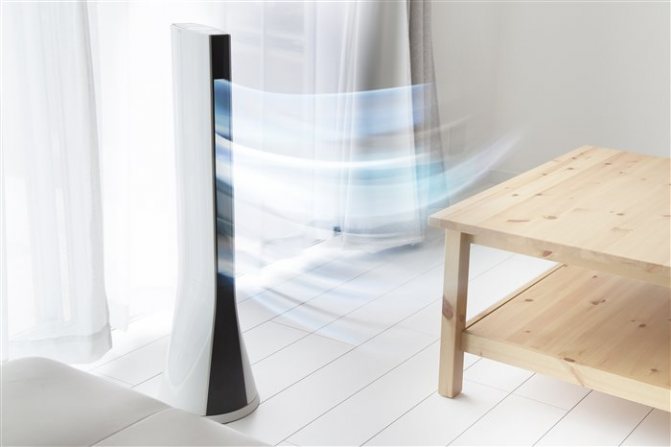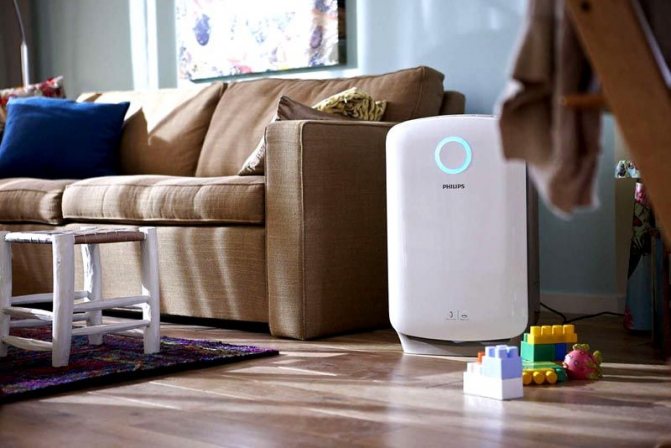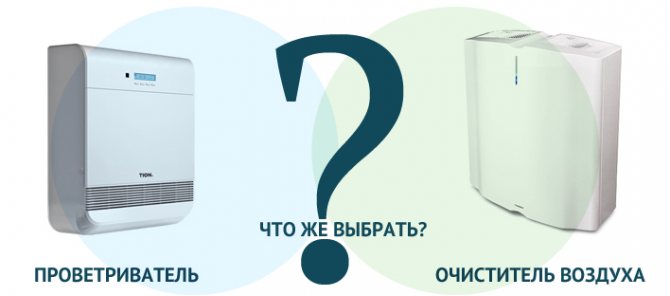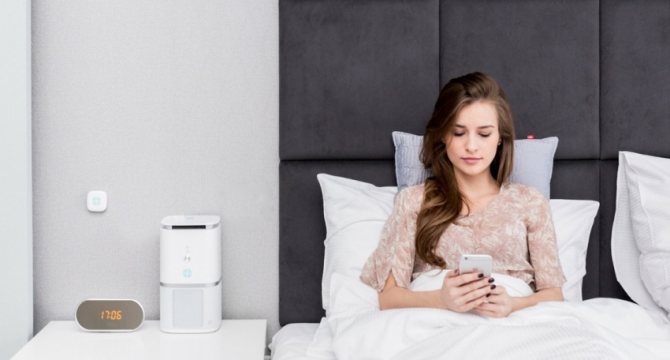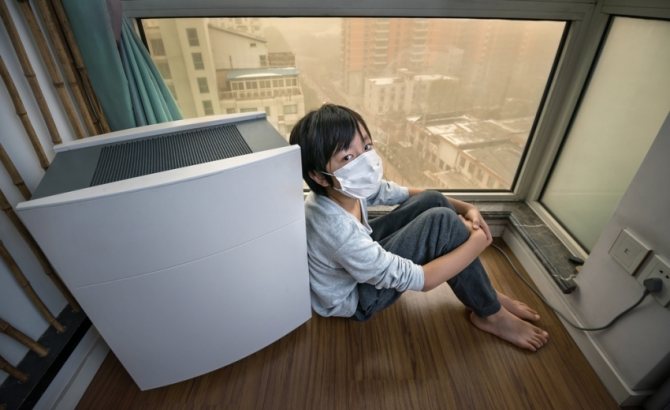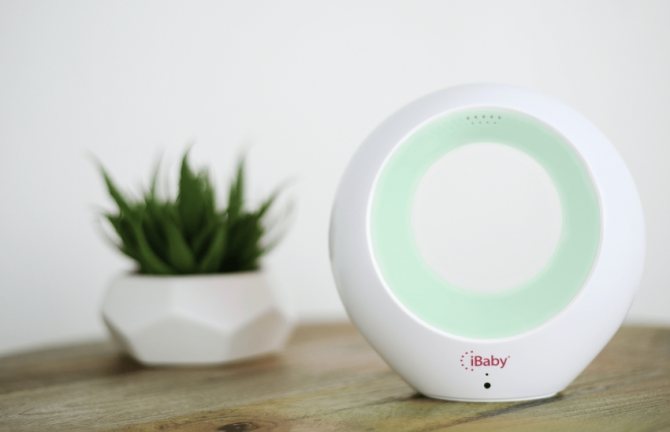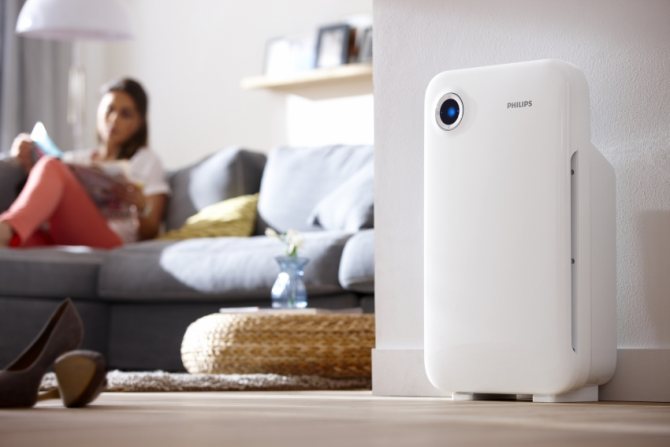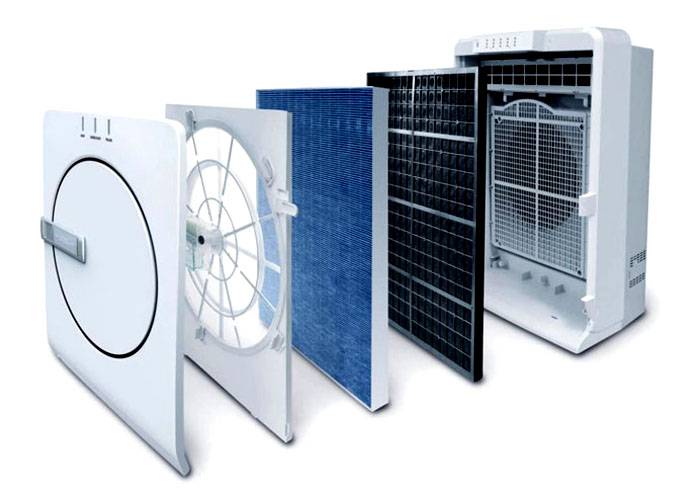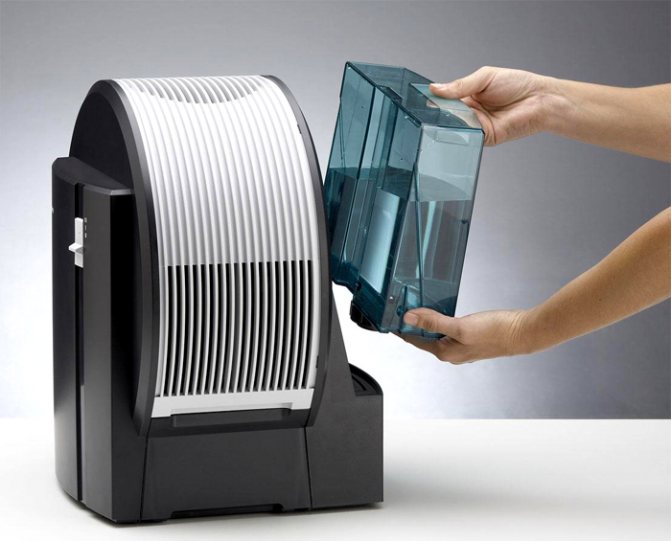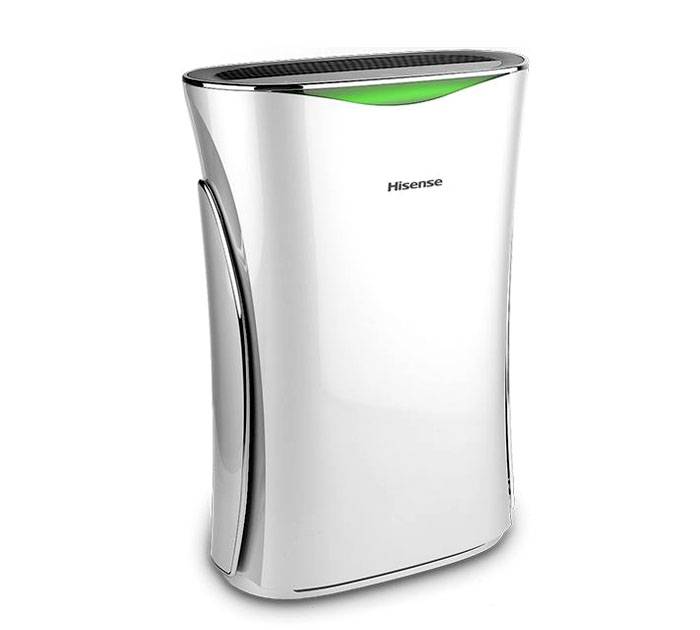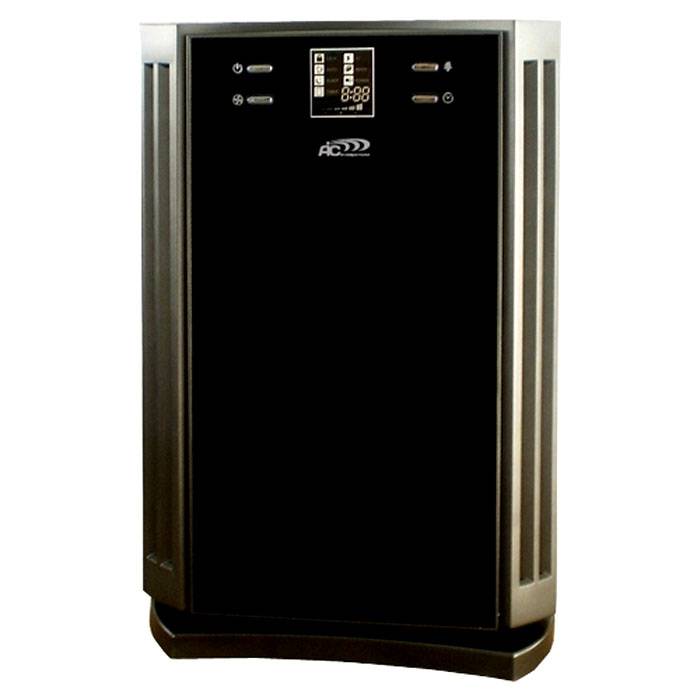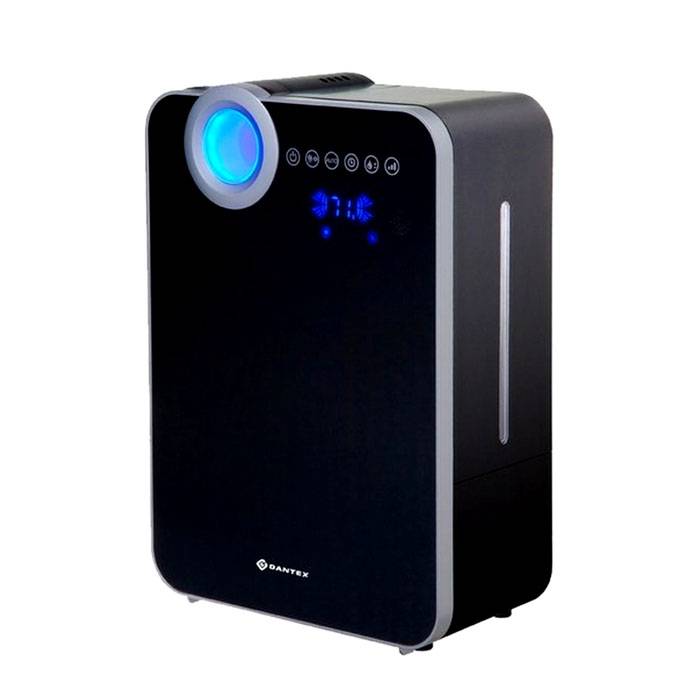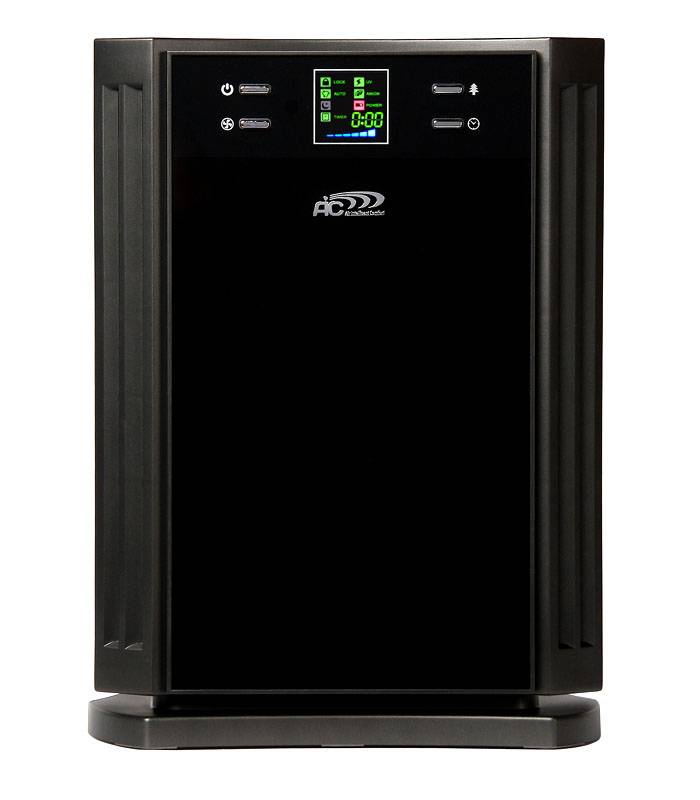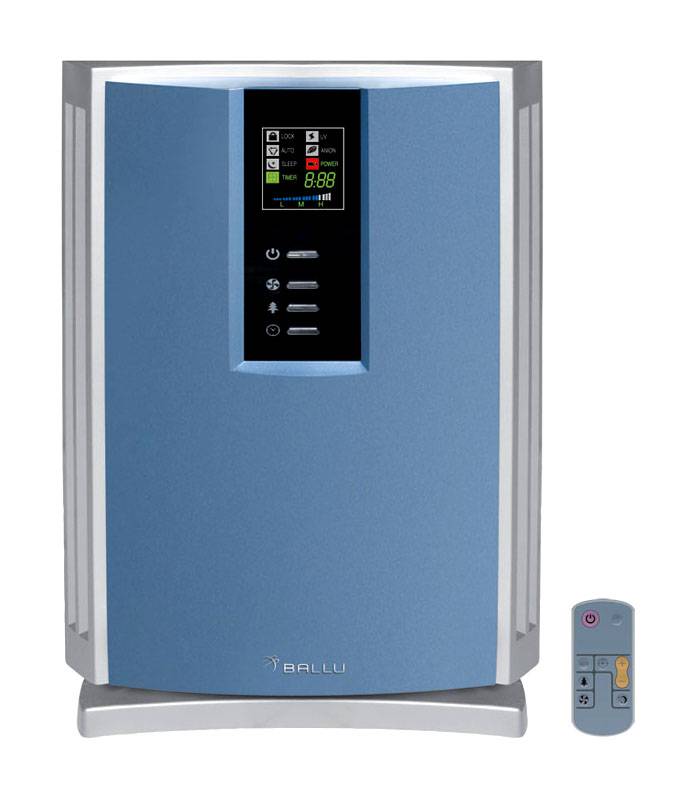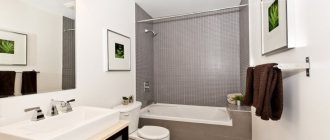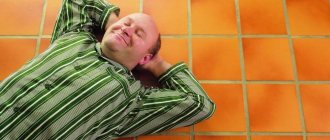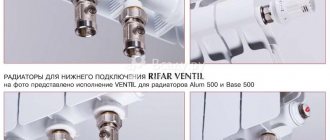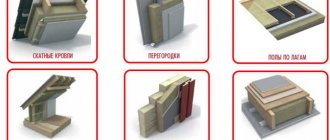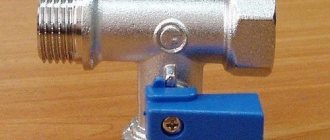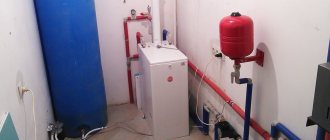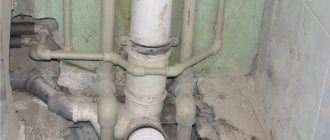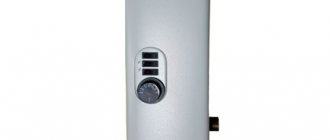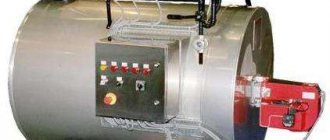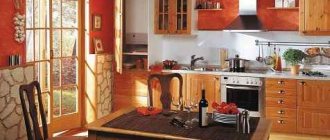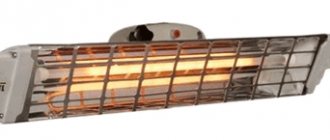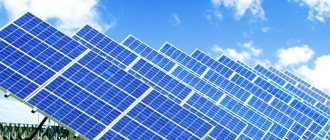Every day we make sure that there is order and comfort in our house. But living in the city, we have to breathe dust, exhaust pipes and polluted recycled waste. Unfortunately, we do not pay enough attention to the cleanliness of the air we breathe on a daily basis.
Although today, thanks to technological progress, it is possible to easily get rid of harmful substances, microbes and bacteria that enter our body and bring irreparable harm.
The cost of the device and ease of care
When choosing a device, several questions should be answered.
Are device maintenance costs important to you?
How often are you going to use the device?
It would be best to keep the device in constant operation, all the time, destroying air pollutants. Breathing clean air, the tenants of the apartment will feel much better, and also rarely get infections.
https://youtube.com/watch?v=YY4HRvhKV-w
Humidification device reviews:
In the springtime, allergies are aggravated. I try not to ventilate the apartment, but to save myself with a water freshener. Also, the purifier removes unpleasant odors well.
Karina
I didn’t buy the freshener myself, as my parents gave the ozonizer after the birth of my grandson, for which I am very grateful to them. Perfectly removes unwanted odors.
Hope
We found an air purifier for ourselves and bought a household-type ozonizer. Now we carry out medical wellness procedures, as well as cleanse the house of harmful odors.
Yaroslava
What is an air purifier and how does it work
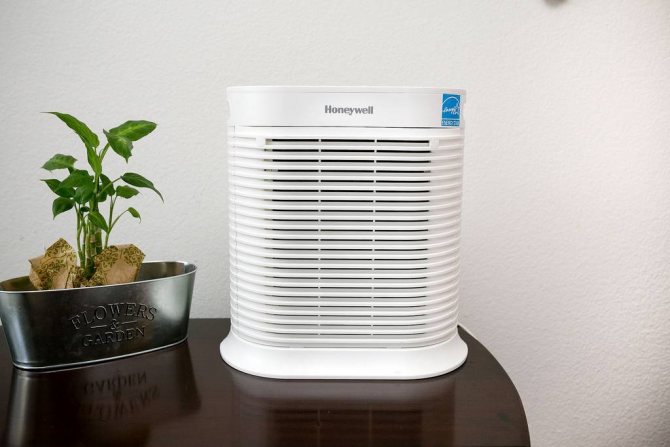
An air purifier is a device that somehow removes small particles from the air: dust, microorganisms, smoke, allergens (for example, pollen, enzymes from pets). According to the principle of operation, air purifiers are divided into several types:
- Electrostatic cleaners (ozonizers). They attract air polluting particles to the plates that have opposite electrical charges. During operation, ozone is released, similar to that which naturally appears in the air after a thunderstorm. But if the concentration of natural ozone in the air even during the thunderstorm season is safe for humans, then the ozonizer can emit this substance in increased doses. In addition, the effectiveness of such a cleaner depends on how often the plates are removed and washed.
- Ionic cleaners (ionizers). Releases negatively charged ions into the air, which "stick" to small positively charged particles of pollution, make them heavier and make them settle down - on walls, floors, ceilings and other surfaces. Thus, the benefits of such a cleaner directly depend on how often you do the cleaning. In addition, not all particles are positively charged - thus, the air is not completely cleaned.
- Ultraviolet cleaners. They oxidize and decompose microparticles in the air through a photocatalytic reaction between the filter and an ultraviolet lamp that illuminates it. Cleaners with a UV lamp are most effective against microorganisms, but not dust and pollen.
- Air washers. This is the simplest type of purifier: the air is drawn in by the fan and passed through the reservoir with water, leaving outside cleaned of heavy particles and humidified - thus, the device combines a purifier and a humidifier. Air washers are quite effective against various types of pollution, but the water, therefore, needs to be changed regularly.
- Filtering purifier.Air is drawn inside the device and passed through a special filter or several filters - for example, based on activated carbon. These devices are quite effective against all types of contaminants, but filters need to be purchased and replaced periodically.
As a rule, combined types of purifiers are currently on the market: electrostatic with an ionizer or UV lamp, a filter with an ionizer, and so on. Air cleaning is generally a combination of a purifier and a humidifier; which is better - a sink or a cleaner, we figured out here in this article:
Car wash or air purifier: what's the difference?
The most effective types of cleaners
Today there are hundreds of different models on the market, differing in functionality and equipment. And it's easy to get confused in the variety of air purifiers. But if we take the principle of operation of the device and the type of filter element used as a basis, then the following options for air purifiers are most suitable for asthmatics and allergy sufferers.
Devices with air cleaning
Units of this type differ in that the water environment created inside the unit is responsible for air purification. For this, one or more "wet" drums equipped with special plates are provided in the body. These structural elements attract debris and harmful impurities to themselves, passing already purified water further through themselves.
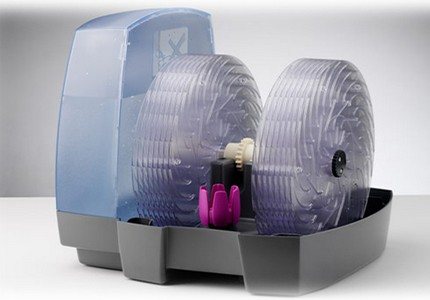

The principle of operation of the device is based on trapping the smallest harmful impurities, moistening them and then collecting them on the filter surface
Modern models are equipped with electronic displays and special sensors that monitor and signal the owner about the degree of contamination of the device.
Devices with HEPA filter
It is these models that are rightfully considered the best option for asthmatics and allergy sufferers. Indeed, thanks to a multi-stage cleaning system, they are able to remove up to 99% of allergens from the air.
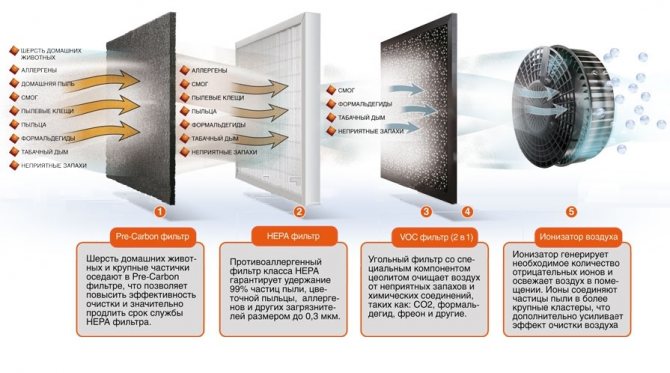

Fine cleaning systems can be safely used not only in household terms, but also installed in rooms where there are increased requirements for the air condition
The effect of fine cleaning is achieved due to the special HEPA fabric, laid inside the filter on thin corrugated strips, the size of the holes of which ranges from 0.3 to 6.4 microns.
In cheaper models, it can be replaced by a synthetic analogue. But it should be borne in mind that in terms of operational parameters, synthetic substitutes are inferior to the original.
The efficiency and speed of cleaning depends on the size of the work surface. But the structure of the corrugated fabric is also of no small importance.
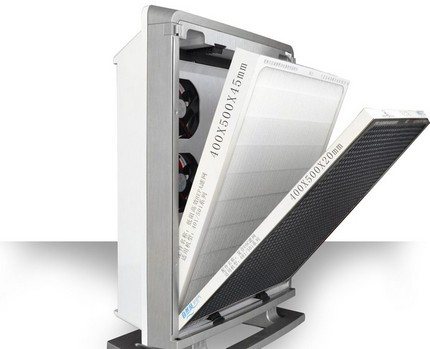

When choosing, keep in mind that solid corrugated HEPA strips should not be too sparse, but at the same time not too dense, which is optimal for high-quality filtration
Such devices are easy to operate, thanks to which even people who are "not very friendly" with technology will be able to master their control without difficulty.
Devices with ionizing effect
The principle of operation of devices of this type is similar to traditional counterparts. The only difference is that the mechanically cleaned directed air flow enters the ionization chamber, in the cavity of which it acquires a positive charge.
After that, it enters the chamber with plates installed inside, which have a negative charge. As a result, the positively electrified dust simply settles on the surface.
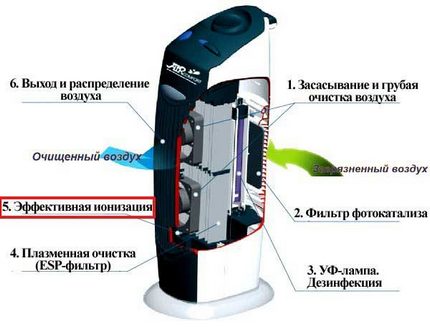

During operation, a large number of negative ionic particles are created inside such a device, which destroy unsafe components and allergens floating in the air.
Devices of this type can be reused. To clean the contents, you just need to unplug the device, remove the plates from it, and then rinse them in soapy water.
Ionizing cleaners are chosen for people with insufficient immune protection and allergy sufferers. Devices that capture solid impurities, the size of which reaches 0.1 microns and above, are installed in living rooms and bedrooms.
Purifier models with ozonizers
Devices equipped with ozonizers are, in fact, generating devices of triatomic oxygen. The principle of operation of such purifiers is based on the synthesis of ozone, in which oxygen molecules at the moment of passing through an electric arc are converted from diatomic to triatomic. Synthesized ozone is a powerful oxidizing agent.
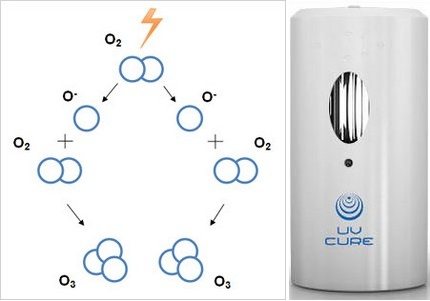

Ozone can have a detrimental effect not only on microscopic mites, but also quickly deal with microspores of molds
Modified oxygen generating units are excellent at fighting off pathogenic microbes and destroying toxins. Their only drawback is that when the equipment is operating, you must leave the room. After all, an increased level of ozone in a room can negatively affect well-being.
Air purifying devices with photocatalysts
In addition to the main function, units of this type are capable of disinfecting the air in a room, effectively destroying substances harmful to the human body. This result is achieved through the interaction of ultraviolet light and photocatalyst.
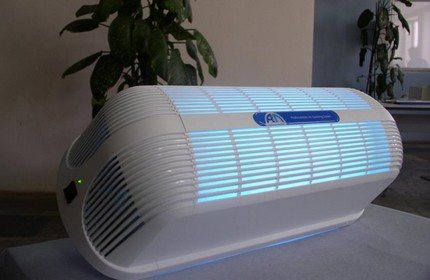

The size of contaminated particles destroyed by such a device is minimal and comparable to the size of the smallest molecules
Photocatalytic models are safer than other types. This is due to the fact that due to ultraviolet radiation on their surface bacteria simply do not multiply. Therefore, in the event of an untimely change of the "cartridge", the harmful substances accumulated inside the device will not one day be thrown into the air.
How to choose an air purifier
When choosing an air purifier, the fundamental parameter will be the area of the room in which you plan to purify the air. Most often, the purifier is located in the bedroom, because this is where we spend the most time. If you plan to move the air cleaner around the apartment, focus on the area of the largest room.
When placing the air purifier, pay attention to the manufacturer's recommendations: there are floor-standing, wall-mounted models, and some samples require placement at a certain height above the floor
What type of filter should you choose?
Preference should be given to an installation that combines several stages of cleaning, in this case you can fight not only the ubiquitous dust, but also unpleasant odors, microbes and viruses. True, it should be borne in mind that the price of such a device will be several times more expensive than that of a primitive air filter.
We also advise you to look at:
- Fire alarm detectors - characteristics of popular models
- Fire extinguishing pumping station - norms and design features
- Fire water supply systems - what are they intended for?
- The principle of operation and characteristics of water thermal curtains
Choosing the best model for your home
Trying to decide what to choose - an air purifier or a productive air humidifier, you should focus on your own needs and specific living conditions.
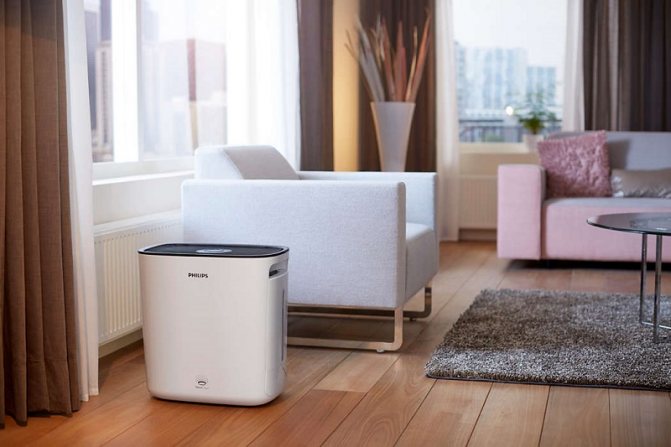

The most compromise option would be an air wash, which effectively humidifies the indoor atmosphere and removes the main pollutants. However, the functioning of such a gadget may not be enough for the special needs of households, for example, to remove the most popular allergens.
When buying, you can use a kind of cheat sheet that will not get confused in the abundance of models offered by manufacturers.
| Need | Appliance |
| Partial air purification and humidification | Cold humidifier |
| Abundant humidification and sterile outlet air | Steam humidifier |
| Maximum removal of allergens | Purifier with HEPA filters |
| Odor neutralization | Air cleaner with AK filter or carbon membrane |
| Moisturizing, aromatizing and fighting germs | Steam humidifier with compartment for aroma oils or brine |
| Air purification and humidification | Air wash |
When buying a dry-type purifier, you should pay attention to the filtration system: the more filters the gadget contains, the better the removal of unwanted impurities will be. The speed of rotation of the fan also affects the performance of the device: the higher it is, the faster the masses will be cleaned.
Additional options will not be superfluous, for example, ionization of air or neutralization of microbes using a UV lamp. We have provided detailed recommendations for choosing a cleaner in this material.
When choosing the optimal model, give preference to equipment designed to service at least 40 sq. m of area so that the device can fully process a decent amount of air. We recommend that you familiarize yourself with the detailed criteria for choosing a humidifier for your home and apartment.
Air purifiers with dry filters
Devices with such a device differ from their counterparts in high performance results and high power in operation. Many users choose just such models of air purifiers. In the device, air under general pressure is passed through multiple filters. An electric fan, located in front of the exhaust grille, takes in the polluted air forcibly, forcing it to pass through all kinds of filter systems.
The main groups of dry-type filters:
Filtering devices for preliminary air purification. It is presented in the form of a mesh sponge, which is easily thought out. It can freely hold dirt and dust particles, the length of which reaches 5 microns. The fine filter system is a kind of frame in which you can see a folded piece of specialized material, dotted with small microscopic holes. This unusual setting will increase the usable working contact space. In addition to all this, an electric field occurs, which independently attracts the remaining dust. Ultimately, there is a retention of dirty particles from 0.1 to 1 micron. An air purifier with a nera filter prevents the smallest particles from being in the air (most often these are the most dangerous allergic elements for human health). It will be best for this particular element to be included in the air cleaner.
You should pay special attention to this when purchasing a device.
In general, a dry device that builds up pressure (tending to a vacuum) carries out its work on the example of a kind of vacuum cleaner, which the British themselves used to call a vacuum cleaner. In another way, we can say that if we put a closed chamber in front of all filters, then we will get a simple model of a vacuum cleaner.
The main advantages of dry filter air purifiers:
- High power and quality of the device.
- You can quickly clean the air, because there is such a mode in the device.
- There is a wide range of products from various manufacturers.
The main disadvantages of dry-type air cleaners:
- Such devices make a lot of noise, since there are strong and powerful fans in their structure. Only very expensive models can operate without unnecessary noise.
- The devices consume a lot of electricity.
Views
Humidifiers and air washers
Purifiers are very common, the design of which includes a water-type filter. This is due to the speed of their work, as well as multitasking, because in addition to cleaning, they humidify the air.
Humidifier
Dry air is also not very good for breathing. Therefore, people buy humidifiers that not only humidify the air, but also rid it of dust and other harmful impurities.
In the case of humidifiers, the principle of operation is simple: air is forced into a stream of water vapor by a fan. Oxygen passing through the filter is cleaned and humidified.
Due to the design, air cleaning is not as efficient as with a sink, but the plus is that all cleaning processes are quick and quiet.
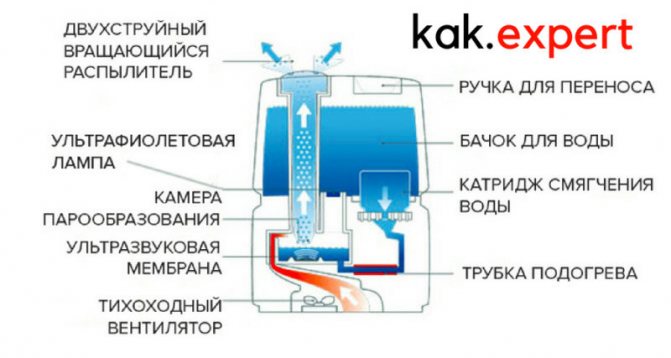

Humidifier device
Washing
It is a container filled with water, inside which there are disks. The fan sucks in air, which gets on the discs and cleans it of dust. Dust settles to the bottom, and clean air comes out. Models of this type differ in size, power and function.
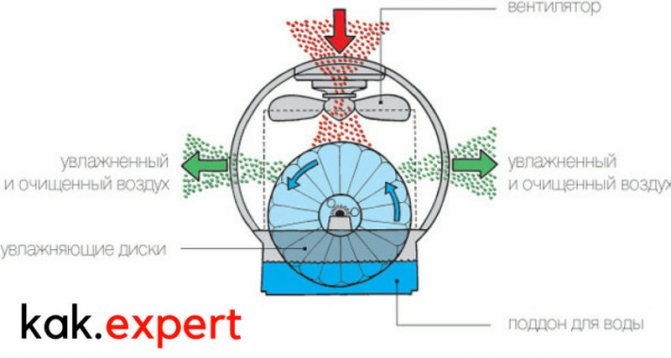

Washing device
Pros and cons
|
|
With dry filters
Cleaners with dry-type filters are powerful and effective. The multi-level cleaning system is able to trap even the smallest particles of dust and dirt.
The design of the device is a cylinder into which air is pumped (the operation of the device resembles a vacuum cleaner). Under pressure, the air passes through special filters and comes out cleaned.
There are three types of dry filter devices:
- Pre-cleaning - retains particles up to 5 microns;
- Fine cleaning - retains dust up to 1 micron;
- The HEPA filter is the best available filter to remove the most dangerous allergens.
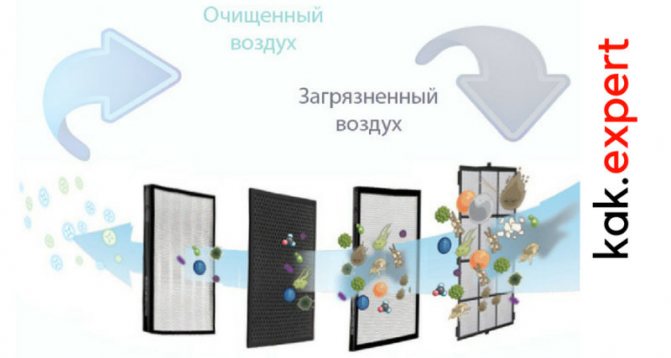

How the air purifier works
Pros and cons
|
|
With ionization function
The principle of operation of such systems is to electrify air and saturate it with ozone. Thus, by electrifying a frequent metal grate, you can build a simple "magnet" that will attract dust of any size.
In the ozonizer, the air goes through the ozonation stage and is purified. Moreover, the fan in this system is superfluous - due to the peculiarity of the system, it is not necessary to drive oxygen.
It is not recommended to use the device as the main one due to its low efficiency. The best layout option is the combination of an ozonizer and a humidifier.
Air purification device
The purchase of budget Chinese air purifiers must be approached very carefully.
The main purpose of installing a purifier is to eliminate components that are unsafe for humans from the air. The purifier, passing air masses through itself, catches dust particles, hairs, sand, wool, mold spores, mites waste products. The main difference between the equipment is the installation of individual filtration. For a room where a lot of dust accumulates, a purifier with an electrostatic filter is suitable. In the event that it is necessary to remove an unpleasant odor, devices with a carbon filtration system are used. To completely break down solid particles, it is necessary to install a purifier with a photocatalytic filter, since other systems only catch and retain harmful components.
Purifier advantages and disadvantages
The purifiers are a stationary unit with a TV-like casing, 2-5 filters and a fan. They are used in large and small rooms - they are mounted in niches, under the ceiling. Cleaners remove various types of contaminants:
- fumes from powders, detergents and cleaning agents;
- mold and spores in rooms with high humidity;
- unpleasant odors;
- tobacco smoke;
- microbes and bacteria, allergens.
The masses pass through a filtration system, in which impurities settle, and only clean air comes out.
Types of filter purifiers
The use of various filtration systems removes up to 99.9% of dust, allergens, and specific odors from the air. Modern manufacturers equip devices with filters:
- pre-cleaning or mechanical. They are a grid that retains particles ranging in size from 5 to 10 microns;
- ionizers. Negatively charged plates that attract positively charged dust and bacteria. They settle, and clean air enters the room;
- water, or sinks. Wet discs are used to attract impurities. The dirt enters a special sump. The filters do not change, it is enough to replace the water and pour out the accumulations from the container;
- coal. Eliminates organic particles, odors, volatile and semi-volatile chemical compounds at the molecular level. The constituent parts are absorbed by the pores of the activated carbon. The filter is replaced once every 6 months;
- HEPA. They are made of corrugated paper or synthetic material impregnated with an antibacterial compound. Retain impurities with fractions up to 0.3 microns, remove 99.9% of dirt, are recommended for allergy sufferers and asthmatics;
- photocatalytic. The filter surface attracts UV rays that break down dust and viruses. The elements have a deodorizing function - they remove the smell of tobacco and other substances;
- plasma. Two metal plates electrostatically attract dust impurities. Filters cannot be replaced.
Types of filter purifiers Important! The type of filter affects the cost of the device
Pros and cons of operation
There are positive and negative aspects to using a cleaner.
Benefits:
- complete cleaning of the premises from dust, odors, allergens;
- filling the room with clean air;
- ease of use and maintenance;
- the possibility of installation in rooms with an area of 40 m2;
- good power.
Minuses:
- works too loudly;
- does not completely destroy fungal spores;
- dries up the air in winter;
- filters need to be replaced regularly.
Before purchasing an air purifier or air humidifier, it is important to consider the characteristics of both devices.
Air purifiers: purpose and varieties ^
Dust has always been one of the main enemies of humanity.
When wiping furniture, household appliances, or wielding a vacuum cleaner, we struggle only with the visible part of it, while the most harmful is precisely the invisible dust - the one that hovers in the air around us.
It is with her that air purifiers are called to fight, and in addition - with unpleasant odors, microorganisms dangerous to health and all kinds of toxic substances, which modern air (especially urban) simply abounds in.
Depending on the method of combating pollution, air purifiers are divided into several types:
- Electrostatic (plasma).
- Ozonizers.
- Devices with filters.
- Air washers.
- Photocatalytic cleaners.
Such an air purifier consists of an air ionizer and several plates, which are imparted with a positive and negative electrostatic charge.
The same charge is received by dust particles in a stream of ionized air, so they are attracted by charged plates and remain on them.
This technology helps to get rid of dust particles down to 1 micron and even smoke.
At the same time, the electrostatic air cleaner dispenses with any consumables, operates silently and has a small electrical power.
These devices are produced both separately and as an additional function of other types of air cleaners.
Ozone is a powerful oxidizing agent, and in moderate doses it is very beneficial. Its action is to destroy bacteria and viruses, as well as to decompose toxic substances and eliminate unpleasant odors.
In these models, air is drawn by a fan through a filtration unit consisting of charcoal and HEPA filters.
The degree of air purification is quite high: removes 99.9% of particles with sizes up to 0.34 microns and even less. Disadvantages of such devices: high noise level and additional costs for the purchase of new filters.
Despite the high cost, these devices are quite popular because they not only purify the air, but also provide an optimal level of humidity.
In this case, air humidification is carried out in a natural way, which excludes its oversaturation with water vapor. Air washers also use a fan that blows air through a block of wet plates.
The special configuration of the latter gives the air flow a complex trajectory, as a result of which dirt particles settle on the wet surface of the plates and then are washed off into the sump.
In this type of purifier, impurities and microorganisms are degraded by oxidation. Active oxidants are formed by the interaction of a catalyst (most often titanium dioxide is used) and UV radiation.
Dust of organic origin, as well as protein membranes of bacteria and viruses, as a result of oxidation are converted into carbon dioxide and water.
Complex molecules of chemicals, toxic or simply having an unpleasant odor, decompose into simple components that are safe for humans. Disadvantage this kind of cleaners - noise and high cost.
How to make a DIY air purifier
You want to buy a climatic device, but you doubt its effectiveness. In this case, you need to read the material on how to make an air purifier with your own hands and at home. For the manufacture of the device, available devices and tools that are at hand for almost every one of us are suitable.
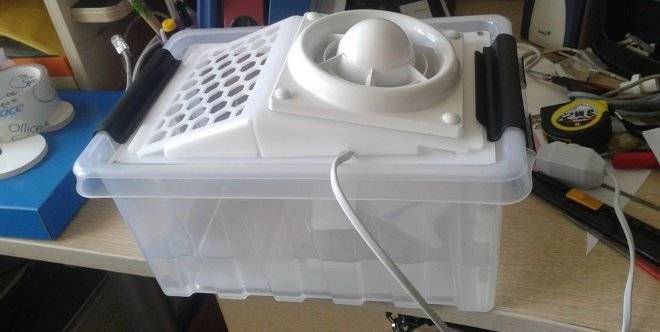

You will need several products:
- plastic container with a lid;
- cooler from a power supply or computer;
- distilled water.
A hole is made in the lid of the same size as the cooler. The fan is fixed with self-tapping screws or screws. Mounting methods may differ, we choose the most suitable one at our own discretion. The main requirement is a secure fit.
The bottom of the tank is filled with water, but just enough so that the liquid does not reach the fan by 3 cm. As a fuse, you can use a switching relay, which will automatically work after a while. The hole on the side opposite to the fan must remain free.
The propeller automatically draws in dirty air from the room. Small particles of dust and dirt remain on the surface of the water, which helps to purify oxygen. These units are difficult to provide an acceptable level of cleaning over large areas, but they have good performance for a small room.
That's all the advice. For the rest of the points, it's up to you. Be that as it may, but it is necessary to start from the tasks set, the volume of the room, the specifics of its use.
How to choose an air purifier: criteria and recommendations
Having filled the theoretical gap, it is necessary to find out how to choose an air cleaner that meets all the requirements of the owner of the house. There are several criteria that deserve primary attention:
- in the kit for each model there is a technical data sheet (even if it is a kitchen air cleaner), which indicates the power and performance of the device. Taking into account the characteristics of the device, you can select the unit for a specific room.
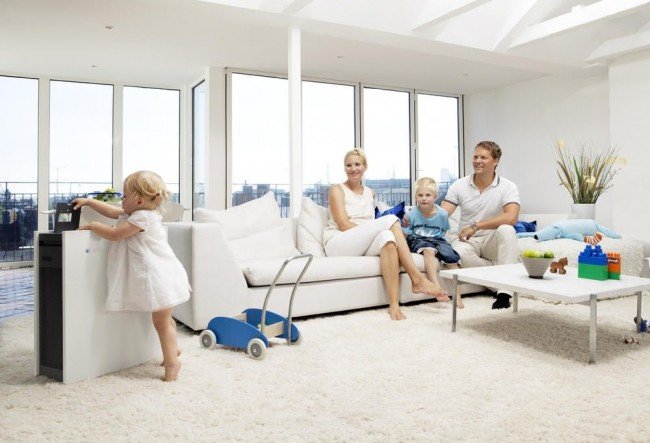

The choice of an air cleaner begins with clarifying one important point - the device is planned to be used in one room or there will be several units. It can be both a stationary device and a mobile model. Experts recommend taking into account several recommendations:
- if you plan to purchase an air purifier for the kitchen, this will be one specialized device, other devices are required for the nursery;
- how to clean the air from dust in a very small room? Performance solutions for car interiors are perfect for small rooms. Their capacity is quite sufficient for servicing small-sized housing;
- for cases when it is planned to use an air purifier for the kitchen, for the nursery, for the hall, units are purchased, focusing on the maximum area of the room.
It is also important to decide on what exactly the household appliance is being purchased for. Standard models of the basic equipment boast only a humidification function. More advanced solutions - sinks, devices with ultraviolet lamps, ionizers. Which air purifier is better - everyone decides for himself, and taking into account the requirements, individual needs.
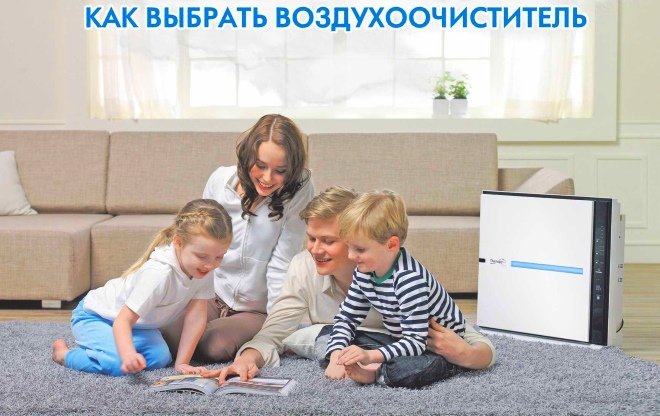

Along the way, one more issue has to be resolved - to determine the frequency of use of the device. To keep oxygen always clean, the device must remain on at all times. Even if you manage to make an air purifier with your own hands, it is very unlikely that it will be able to function for 24 hours.
Aero washes are ideal for periodic start-ups. In such a device, water remains constantly, it can temporarily "fall asleep", while an unpleasant odor remains in the tank, which is fraught with its absorption for a long time.
Varieties of air purifier filters: advantages and disadvantages
Stand-alone air purifiers for home or office space are divided into several types according to the type of filter.
Air pre-filters (mechanical)
Simple filters for an air purifier, which often consist of a fine mesh, are used to pre-filter the air. Remove large dust particles, animal hair. Carbon or HEPA filters protect not only people from dust particles, but also the internal components of devices. Wear is minimized by timely membrane change.
Disadvantages: Pre-filters remove particles at least 5-10 microns in size. If you need to retain smaller particles, the filter will not cope with them. The second disadvantage of having a HEPA filter is the costly replacement.
Advantages: mesh filters are reusable, cheaper than other analogues. For cleaning it is enough to vacuum, wipe with a damp sponge.
Electrostatic (air ionizers)
The principle of operation of the air purifier-ionizer is the attraction of electric charges of different polarity. Dirty air enters the ionization chamber. Here, contaminated particles acquire a positive charge and settle on negatively charged membranes.
Advantages: easy cleaning of the plates (soapy water), well clean the air from the smallest contaminated compounds, long service life of the device, the device is equipped with electrostatic filters, is completed with HEPA or carbon filters.
Disadvantages: high price, frequent replacement of plates (depending on the manufacturer, the degree of air pollution).
Water filters
They are used in climatic complexes, which are most often called "air washing". Principle of operation: air is sucked in by the fan, ionized (according to the principle of electrostatic filters). Then it is fed to the dampening discs with the opposite charge. Dust and dirt particles are attracted to the wetted discs, settle and are washed into the sump.
Advantage: Replaceable filters are not required, there are no additional operating costs, HEPA membranes are often used in combination with a water filter. They humidify the air and neutralize the smell in the apartment.
Disadvantages: high price category, large dimensions, the need to monitor the filling of the pallet with dirty sediment.
Carbon filters
Carbon filters are capable of absorbing gas molecules, eliminating high molecular weight volatile organic compounds. The more micropores are placed in the charcoal filter, the more odors it absorbs. After the filter is full, it needs to be replaced.The increase in the efficiency of the carbon filter is due to the additional equipment in the form of mechanical membranes. The efficiency and speed of gas elimination depends on the filter surface: the larger the membrane surface, the higher the air absorption.
Disadvantages: coal cleaners are not very effective when used in a humid environment, not effective for removing gases with low molecular weight (formaldehyde, nitrogen dioxide, sulfur dioxide).
Advantages: compact size, relatively low price, inexpensive maintenance in operation, with timely replacement of the filter, they can last a long time.
HEPA filters
Filters of this type are most often used for ventilation systems in medical institutions, and are used in industrial and domestic air cleaners. They are able to eliminate contaminated particles with a diameter of more than 0.1 microns, trap animal hair, allergens, dust, fungal spores and pollen. The ideal solution for a child's room, as well as for people with allergies.
Advantages: it is able to clean the room in a few minutes, eliminates odor, contaminated particles, humidifies and stabilizes the air in the apartment, works very quietly, service life is more than 5 years.
Disadvantages: high price category, expensive maintenance.
Photocatalytic filters
The air purification technique consists in the oxidation of molecules on the surface of the photocatalyst. Further, under the influence of ultraviolet radiation, the contaminated particles are destroyed to a harmless state. Photocatalytic oxidation effectively neutralizes viruses, bacteria, gases.
Disadvantages: limited assortment, high price.
Advantages: quiet operation, high degree of cleaning, AirComfort humidification system, cleaning efficiency - 99.99%, air deodorization, breaks down dust particles to harmless components.
The main types of filter elements
The most important components of devices designed to remove negative impurities from air masses are filters. The cleaning efficiency largely depends on their type. The most popular are the following varieties.
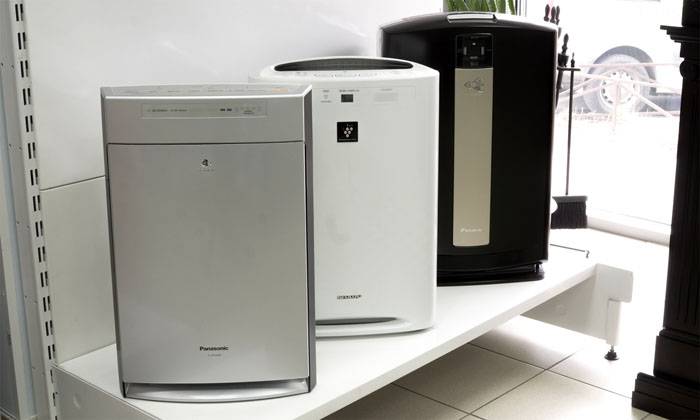

Stylish models for residential use
Mechanical
Mechanical filters are mainly used for pre-cleaning air streams. They are able to trap dust particles, organic and inorganic fibers, animal hair. Most often they are used to protect the internal parts of devices.
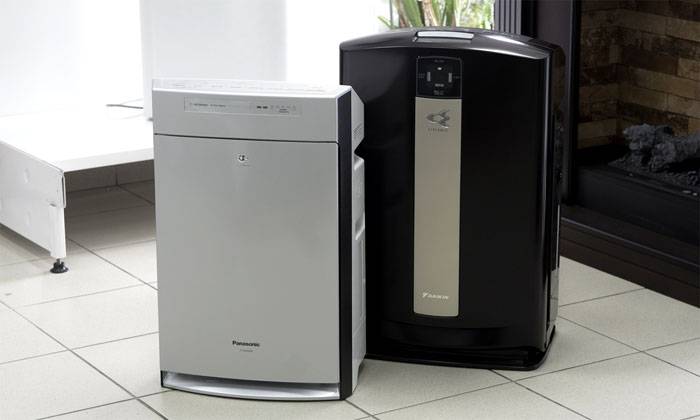

Household structures for home use
In this case, a polymer mesh, foam rubber or special fabric is used as a filter element. If the barrier for the penetration of large particles is not cleaned in time, then its effectiveness is reduced to zero. You can use an ordinary vacuum cleaner or a washing vacuum cleaner to remove dirt.
Coal
In most cases, these filters are used as additional elements in cleaning systems. They cannot effectively trap light compounds, but they are capable of trapping unpleasant odors, gas impurities, esters, phenols and formaldehydes.
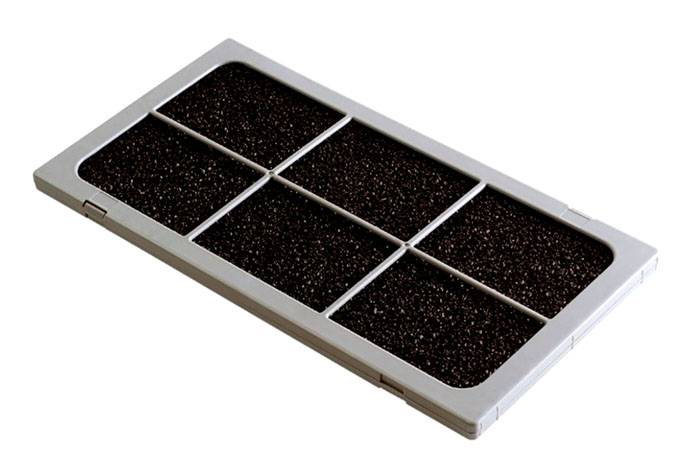

Carbon filter for installation in air purifiers
The principle of the filters is that the molecules of substances are adsorbed directly on the activated carbon. However, different particles can be absorbed in different ways. Some are worse and some are better.
As it gets dirty, it is necessary to replace the filter parts. Their service life can vary within 3-12 months. You can buy an air purifier for an apartment with a charcoal filter for a relatively low price. However, they are more often used in combination with other analogs.
Electrostatic
Electrostatic structures are highly efficient. They perfectly clean the air from soot and dust, but not from toxic substances and volatile organic compounds. The operation of filters is based on the principle of collision of charges of two polarities.
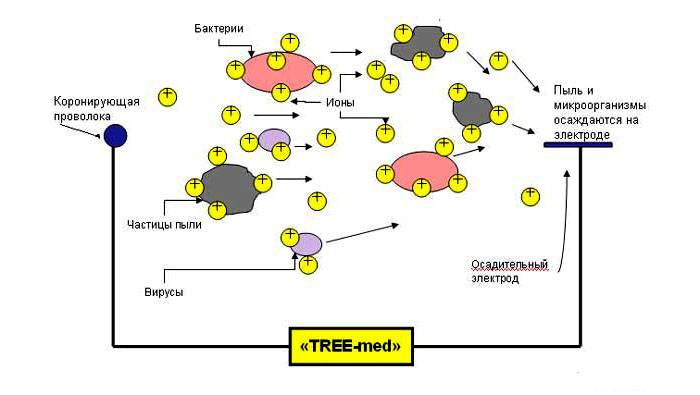

Functional diagram of electrostatic cleaning devices
During operation, voltage is applied to the block consisting of metal plates. It makes it possible to form an electrostatic field. Dust when passing between these plates is attracted to them. Filters are capable of capturing particles larger than 0.01 microns, therefore they are excellent for use in air purifiers from dust.
HEPA filters
The products are manufactured on the basis of branched-pore borosilicate fiberglass. They trap 85 to 95 percent of pollutants. As for the advanced analogs of TRUE HEPA, they help to purify the air by 99 percent.
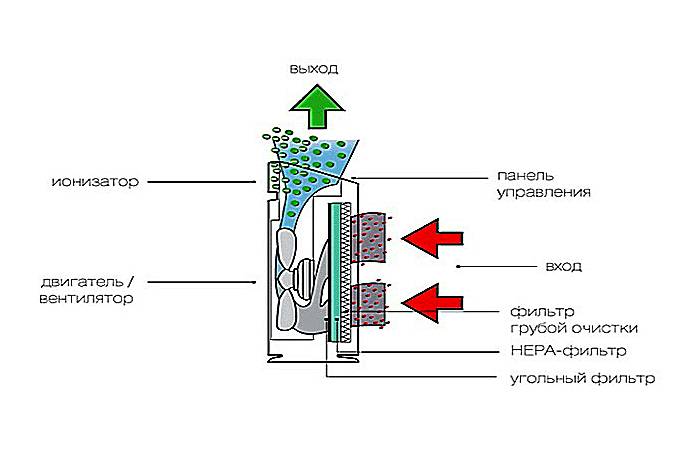

Combination of HEPA filters with other analogs
Due to their high efficiency, the presented filters are widely used in medicine, industry and electronics. Of the significant disadvantages for consumers, one can single out the high cost of products.
Photocatalytic
Filtration uses a completely new technology called photocatalysis. Harmful impurities of organic origin do not remain inside, but decompose under the influence of ultraviolet radiation and titanium dioxide. As a result, harmless components are formed.
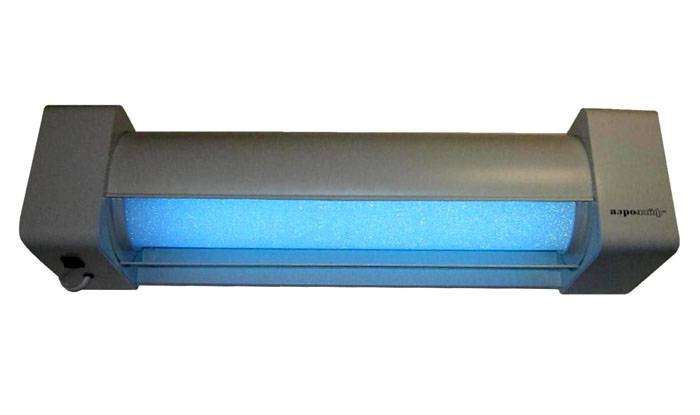

Photocatalytic cleaning device
Photocatalytic filters are capable of degrading the smallest particles that can only be compared with large molecules. The cleaning efficiency is not affected by the period of operation of the filter element, since there is no period of use.
Participating cleaners
The total number of test participants that we took into account to identify the best (most efficient air purifier) in 2020 is 19. These are models of the most famous brands in this segment.
Here is a complete list and key features:
| Model | Productivity (m³ per hour) | Room area (m2) | Filters | Main functions | Cost, rub.) |
| Daikin Ururu MCK75JVM K | 450 | 46 | advanced, bio, electrostatic, catechol, carbon and others | air purification and humidification | 55000 |
| BORK A704 | 320 | 40 | preliminary, anti-allergenic, charcoal, HEPA, moisturizing | air purification and humidification | 47000 |
| BORK A803 AirEngine | 600 | 80 | preliminary, enzyme filter, charcoal | air cleaning | 58880 |
| BORK А804 | 492 | 50 | preliminary, anti-allergenic, HEPA, coal | air cleaning | 49880 |
| IQAir HealthPro 250 | 440 | 85 | preliminary, coal, HEPA | air cleaning | 100000 |
| Ballu AP-155 | 170 | 20 | preliminary, coal-zeolite, HEPA | air cleaning | 9000 |
| Tefal Intense Pure Air PU4025 | 150 | 35 | preliminary, carbon, HEPA, anti-formaldehyde | air cleaning | 16000 |
| Xiaomi Mi Air Purifier 2 | 310 | 42 | preliminary, coal, HEPA | air cleaning | 11000 |
| Xiaomi Mi Air Purifier Pro | 500 | 60 | preliminary, coal, HEPA | air cleaning | 18000 |
| Xiaomi Mi Air Purifier Max | 1000 | 120 | preliminary, coal, HEPA (2 sets) | air cleaning | 34000 |
| Philips AC3256 / 10 | 393 | 95 | preliminary, coal, HEPA | air cleaning | 40000 |
| Panasonic F-VXK70R | 402 | 52 | preliminary, coal, HEPA | air cleaning | 40000 |
| Panasonic F-VXM80R | there is no data | 61 | preliminary, charcoal, HEPA, moisturizing | air purification and humidification | 65000 |
| LG SIGNATURE LSA50A | there is no data | 52 | preliminary, coal, electrostatic, moisturizing | air purification and humidification | 89990 |
| LG Puri Care AS95GDPV0 | there is no data | 89 | preliminary, HEPA, coal | air cleaning | 79990 |
| Dyson Pure Hot + Cool | 102 | 37 | preliminary, HEPA, coal | air purification, heating | 35000 |
| Boneco P700E | 800 | 200 | preliminary, coal, HEPA (2 sets) | air cleaning | 70000 |
| VENTA LPH 60 | there is no data | 95 | Preliminary, HEPA, charcoal (optional), moisturizing | air purification and humidification | 102000 |
| TION Breezer 3s | 140 | there is no data | preliminary, coal, HEPA, carbon-catalytic | air purification and supply ventilation | From 36000 (depending on configuration) |
* All prices are valid at the time of publication of the material.
Among the test participants there are models with different functionality and different prices. All the more interesting - you can form an opinion about how expensive purifiers are more effective than budget ones (if more effective), how additional functionality (for example, air humidification) affects the quality of air purification.
Most purifiers have a similar filtration system - mechanical air purification from impurities: coarse dust and debris are stopped by a pre-filter, fine - created using HEPA technology.
The carbon filter must deal with odors and various gaseous contaminants in the air. The marketing names of the filters may vary, but the essence remains the same.
Expert opinion:
Daniil Golovin, expert at Chudo.tech and YouTube channel about Tostr home appliances
Typically, the pre-filter in an air purifier is a standard plastic mesh that traps coarse dust. Such filters do quite well with this task. Perhaps the only exception in the Russian market is the IQAir HealthPro 250 air purifier: it has a pre-filter of class F8. This means that it traps a large volume (about 55%) of harmful fine dust, as small as 0.3 microns. This clearly serves to improve the efficiency of the purifier, plus it reduces the load on the following filters.
For Daikin Ururu MCK75JVM K and LG SIGNATURE LSA50A, the main fine dust filters are electrostatic: dirt particles acquire a positive charge and are attracted to the inner surfaces of the filters, which have a negative charge. It is possible to compare the effectiveness of different cleaning technologies.
Purifier selection principles
In order to get rid of the problem and not waste money on the purchase of an ineffective device, you need to carefully study the criteria that affect the choice of an air purifier.
- The first and most important is the contamination that the device handles. The table below shows the degree of effectiveness of various types of purifiers in relation to major air pollutants.
| Types of cleaners and their ability to neutralize harmful factors | |||||||
| Types of cleaners | Electrostatic | Ionisers | HEPA | Photo catalysts | Ozonators | Coal | Thermodynamic |
| Types of pollution | |||||||
| Dust | • | • | • | • | — | • | • |
| Bacteria and microorganisms | • | •• | •• | •• | • | • | •• |
| Tobacco smoke | — | • | • | •• | — | •• | • |
| Toxic fumes | • | — | •• | •• | — | — | — |
| Household odors | • | • | •• | •• | • | • | • |
| Gases | — | — | • | • | — | • | • |
| Soot | • | — | — | • | — | — | • |
| Allergens | • | •• | •• | •• | • | — | •• |
Performance. One device can only work effectively in a separate room. It cannot clean the air volume of an entire apartment or house. The performance of each model is fixed and depends on the area of the room. As you can see from the table, the best performance and rating are for photocatalytic, thermodynamic and HEPA filters. Maintenance complexity, filter change frequency. An air purifier without replaceable filters, although it does not require consumables, also needs systematic maintenance. The efficiency of the device largely depends on the correctness and timeliness of its maintenance:
- Electrostatic - Requires cleaning of the metal filter plates once a week.
- The photocatalytic device, ozonizer, ionizer must be vacuum cleaned once a month.
- HEPA filters are vacuum cleaned as they become dirty and completely changed every six months.
- In devices with "air washer" you need to change the water every 2-3 days, and check its level daily.
- The charcoal filters are changed every six months.
How often you plan to use the device. To ensure that the indoor air is always clean, the dust air purifier must be running continuously. If the device will be switched on periodically, you should not choose devices with the "water washer" function. Water not drained in time will become a breeding ground for bacteria. In addition, in a short period of working time, such devices cannot effectively purify the air, and, accordingly, will not bring tangible benefits. Noise level during operation. With the constant operation of the device, residents should not experience discomfort and inconvenience, therefore it is better to purchase completely silent models (these include photocatalysts and ionizers) or devices with a night function. Place and method of installation. Floor-standing, wall-mounted and table-top devices are offered. During installation, it is also necessary to comply with the requirements for the minimum distance from the walls to the device. Availability of options and additional functions, for example:
- air pollution sensors.
- filter change indicators.
- automatic control of humidity levels.
- sleep timer.
Air purifiers for apartments: rating
It is worth focusing on the following models:
Air purifiers with HEPA filters.
If a model is purchased with HEPA filters in the design, then there is no doubt that a reliable ozone layer will appear around, which will destroy all bacteria and dust in the air, including allergens. Caring for the device is also easy, without any difficulties. For maintenance, you need to vacuum the filter once a month and replace it frequently (once every 6–12 months). The number of filter changes per year will directly depend on the amount of dirt in the room.
Air cleaners that include an electrostatic filter.
Choosing between cleaners that can quickly and effectively remove excess dust in the room, you can buy a model that includes a plasma (otherwise electrostatic) filter. Dust under the influence of air pressure will independently be attracted to its grate. To clean a dirty filter, it is enough that you rinse it under a stream of clean water. The filter has a long service life and its parts do not require frequent replacement. But this filter will not be able to withstand the work with large heaps of dust. And it is unlikely to eliminate all pollutants from the air - only 9 out of 10
For small children and allergy sufferers, completely purified air is very important
Air purifiers for allergy sufferers.
It is worth noting that the cause of the allergy can be much deeper. More often than not, the matter lies not in the dust itself, but in the mites living in it. Allergies to mold and mildew may also develop. Only by getting rid of them completely can the root of all problems be overcome. To do this, it is effective to use air purifiers with the presence of ozonation of the air space, as well as air purifiers of a photocatalytic nature. At the same time, they must necessarily have the function of independently removing dust, because it is worth getting rid of it first of all.
Photocatalytic devices do their work through a symbiosis of ultraviolet radiation together with a catalyst. This is fatal to harmful microorganisms and other chemical compounds that can quickly degrade.
In air purifiers, ozonizers should be noted for their special weapon - ozone, which also quickly and efficiently fights microorganisms by means of oxidation. These devices must not be used in the presence of people around them. Before turning them on, you should leave the room.
Air purifiers with ionization function
Devices of this design have in itself by the scheme developed in the last century by the Russian scientist Alexander Chizhevsky. The device operates on the example of a thunderstorm - the air is electrified and filled with ozone.
It also turned out that electrically saturated air can easily perform high-quality and useful work. If you choose a plate or a frequent lattice made of metal, and then electrify it, then it will easily attract dust to itself, moreover, of various microscopic sizes (which no modern vacuum cleaner filter can cope with). Such a system is capable of performing the function of an air purifier.
In the capacity of the ozonizer, the air is not easily ozonized, but also cleans well and efficiently... At the same time, it is not at all necessary to drive it under a certain pressure (as in the model of an air cleaner with dry filters) - that circulation of the air mass that occurs during household walking or a simple draft from the window is enough. Dust is easily attracted to the air cleaner on its own.
If the drug were created now, then scientists would definitely use the word nanotechnology. It works so effectively and cleans the air, having only a simple electric field and at the same time deftly holding even the most microscopic particles of dust.When the device is operated together with other devices, a flow of ozone-saturated air develops, which can easily neutralize both water from impurities and food products from chemistry.
It is interesting! Ultrasonic aroma diffuser in the online store: how to choose
Air purifier with humidification function: features of the filtration system
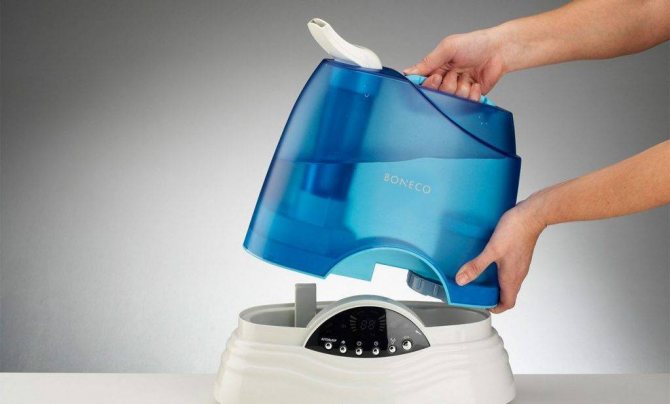

Devices must be easy to use and maintain
The type of filtration system, namely the installed filter, depends on what kind of harmful particles the device will save the room. The filter can be:
- electrostatic, in which several metal plates with a static field are used. Contaminated air masses passing between them settle. Filters of this type remove dust from the air;
- HEPA filter, in which the room is cleaned of dust by 99.9%;
- photocatalytic, which eliminates bacteria, viruses and gases;
- coal, which allows you to eliminate volatile harmful components from the air, for example, tobacco smoke.
A humidifier can be installed in the purifiers:
- traditional, in which contaminated air masses pass through the installed wet filter;
- ultrasonic, in which air masses pass through fine spray obtained by splitting water.
If you feel a decrease in performance, dry mouth and nose, drowsiness, then you should think about installing a humidifier indoors.
For families in which children are growing up or there are people with allergies to dust or other components, you should pay attention to an air purifier. For more adventurous people today, models of combined devices are provided that allow you to simultaneously clean and humidify the air masses in the room.
How an apartment air purifier works
The device of an air purifier is quite simple. The principle of operation of a standard device is the passage of an air mass through various filter systems. The flow rate is adjusted manually or in automatic mode.
Filters can be stationary or replaceable. In stationary models, the cleaning process takes place with the passage of an air stream through wet cartridges. These are complex structures that additionally regulate the level of humidity in the room.
Various companies are currently offering innovative air purification devices. One of them is heating the air stream to a certain temperature, when all viruses and microbes die.
How the humidifier works and functions
During the heating season, the air humidity in the apartment can drop to critically low rates - 20%. The normal level of relative humidity in the room in winter must be in the range of 30-45%. In the summer, the requirements for this microclimate parameter are even higher: the indicator should remain within 30-60%.
Therefore, it is extremely difficult to do without a device that can fill the missing amount of moisture in the air. A humidifier is an almost indispensable device that allows you to easily maintain a normal microclimate in your home.
In fact, air humidifiers convert water into steam or microscopic droplets. We talked in more detail about the device and the principle of operation of humidifiers here.
Certain types of devices do this in different ways:
- Cold type humidifiers they drive the liquid through special cartridges using a fan. In these blocks, both water splitting and its partial purification from harmful impurities take place.
- Ultrasonic models convert water into microdroplets due to membrane vibrations. It vibrates at a tremendous speed, practically breaking the water into fine dust. This technique is extremely productive and quite economical, but it remains very demanding on the quality of water.Only distillate should be poured into an ultrasonic humidifier, since together with water, the membrane is able to break down harmful impurities that may be in ordinary purified water.
- Steam humidifiers differ in power, productivity and greater loyalty to the composition of the water being poured. The devices evaporate water due to heating: after boiling, the water turns into steam and is fed into the air. The steam at the outlet is practically sterile. The disadvantages of such devices are decent energy consumption and the ability to significantly over-humidify the air.
Such characteristics allow air humidifiers to perform their main tasks efficiently.
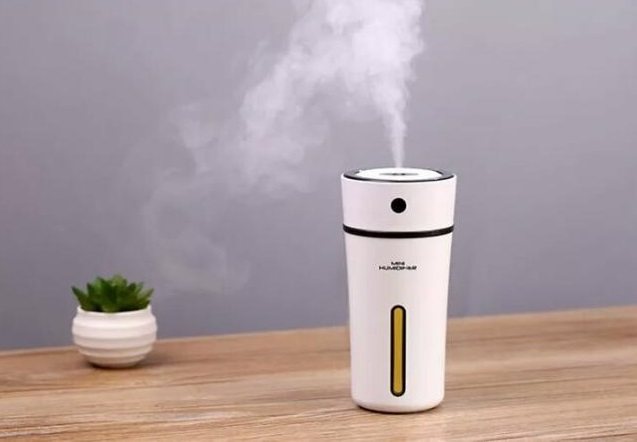

However, the advantage of this type of equipment is the ability to choose a completely compact, but quite productive model, which can even be placed on a desktop.
If good air purification is required, such devices will not be the best choice, since their main purpose is to convert water into steam. They can only partially make the air cleaner: the smallest dust, mixing with microdroplets of water, settles faster on surfaces and does not fully enter the respiratory tract.
It is important to remember that most humidifiers are water demanding. Therefore, if you are not ready to buy distilled water or prepare it yourself, it is better to give up ultrasonic modifications and traditional humidifiers.
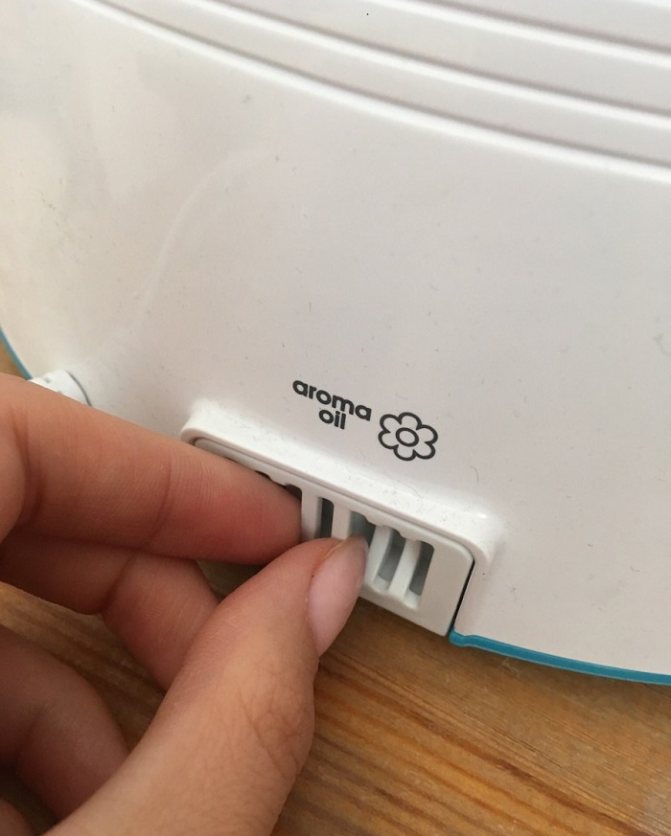

Some models of steam humidifiers may have a special compartment for aromatic oils or salt solution, which will detrimentally affect pathogenic bacteria. Using these fluids will make the air more humid and safer. However, even such neutralization of pathogens will not make the air masses extremely clean.
To get acquainted with the best offers of household air humidifiers for home and apartment, please follow this link.
Air purifiers for home: top 10
The table shows the most popular models of air purifiers, according to customer reviews.
| Rating | Name | Characteristics (filters, area of effect) | Cost, rub) |
| 1 | AIC XJ-3800A1 | HEPA filter, photocatalytic, carbon, ionization. S = 60 m2 | 16.000 |
| 2 | Daikin MC707VM | Pre-cleaning, electrostatic, ionization. S = 42 m2 | 50.000 |
| 3 | Redmond RAC-3704 | HEPA filter, photocatalytic, carbon, ionization. S = 46 m2 | 24.000 |
| 4 | AIC KJF-20B06 | HEPA filter, photocatalytic, carbon, ionization. S = 40 m2 | 11.000 |
| 5 | Boneco P2261 | HEPA filter, carbon, ionization. S = 60 m2 | 2.000 |
| 6 | Bork A800 (AP RIH 9935) | HEPA filter, carbon. S = 38 m2 | 40.000 |
| 7 | Mitsubishi Electric MA-E83H-R1 | HEPA filter, carbon. S = 63 m2 | 35.000 |
| 8 | Shivaki SHAP-3010 | HEPA filter, photocatalytic, carbon, ionization. S = 25 m2 | 14.500 |
| 9 | Atmos Maxi | photocatalytic, coal, pre-treatment, ionization. S = 30 m2 | 14.000 |
| 10 | Philips AC 40144.5 | HEPA filter, carbon. S = 55 m2 | 30.000 |
Other devices with air purification function
Humidifiers
The norm of air humidity in a dwelling is 40-60%. A decrease in this indicator due to the action of heating radiators in winter and air conditioners in summer leads to the creation of an uncomfortable and sometimes hazardous microclimate in a residential area. The principle of their operation is quite simple - there is a reservoir with water inside the device, which gradually evaporates and in the form of steam is thrown into the room by a fan.
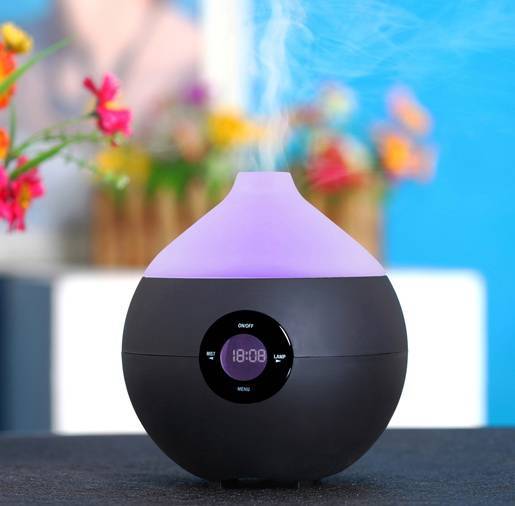

By design, the humidifier can be:
- Mechanical. The evaporation of water occurs under the action of the air flow forced by the fan.
- Ultrasonic. Water transforms into a vapor state when it hits a special membrane. The ultrasonic device works absolutely silently and is energy efficient.
- Steam. Heating of water to a state of steam occurs in the inner chamber.
Air wash
A device that is also a so-called air washer is very popular. The principle of operation of such a device is as follows:
- the fan draws dirty and dry air into the device;
- inside, it is driven through a system of disks moistened with water - on which the smallest dust particles settle - or through a water curtain (in this case, the dust dissolves in water);
- purified and humidified air is discharged into the room.
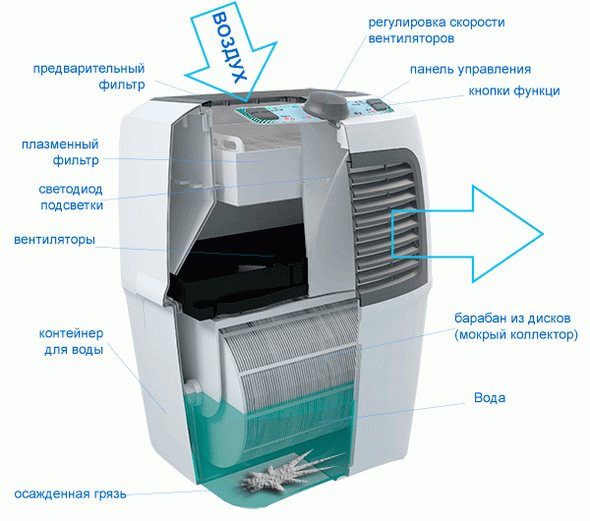

What is better - an air purifier or air washer? It depends on your problem. If you are struggling with dust, get a sink, and to get rid of bacteria, fungi and germs, it is better to choose a functional air purifier.
Air humidifiers
humidifying devices
We bring dirt and dust into the house along with outdoor shoes and outerwear, it penetrates to us through open windows when the apartment is ventilated or an unexpected draft occurs. Someone who is susceptible to allergies can feel very unwell - asthmatics, for example, are most likely to develop an additional attack.
At the same time, the purchase of a simple air humidifier does not completely rid a person of this problem. After all, it is considered only a side effect: humidification of the air helps to bind and hold together dust particles. So, dust sticks together, turns gray and falls on the floor and other surfaces in the room. Leaving the air we breathe most of the time.
Air washes take place in a completely different way. Their main goal is contact air purification, and the process of humidifying it is an additional action. According to their structure, the sinks are assembled quite simply: the plastic container is filled with water. Plastic discs are lowered into this container (not completely), which are blown by the air flow coming from the operation of the fan. Dust particles adhere to wet discs, which are removed from them by rotating the device.
All types of sinks have the same design and devices differ from each other only in the power and strength of the electric fan, external influence, as well as in the size of the disks themselves. Also, the device may contain additional features: filtering, ionization.
The main advantages of sinks and humidification devices
- Economical to use. Appliances consume only about 120 - 144 watts of electricity.
- Quiet during operation, as the fans are not too powerful.
- Simple in design and easy to maintain. The device should only be rinsed with plain water from time to time.
The main disadvantages of humidifiers and indoor air washes
- Slow at work. Fast modes of operation are not provided in the device. If you need to quickly clean the air, then a car washer and humidifiers will not cope with this task.
- It is believed that such devices lead to an increase in the number of microbes and bacteria in the room, because they like heat and moisture. But it shouldn't be taken seriously. The main thing is to follow the instructions for using the device, and everything will be fine. The device does not carry any danger to human health.
(no votes yet)

